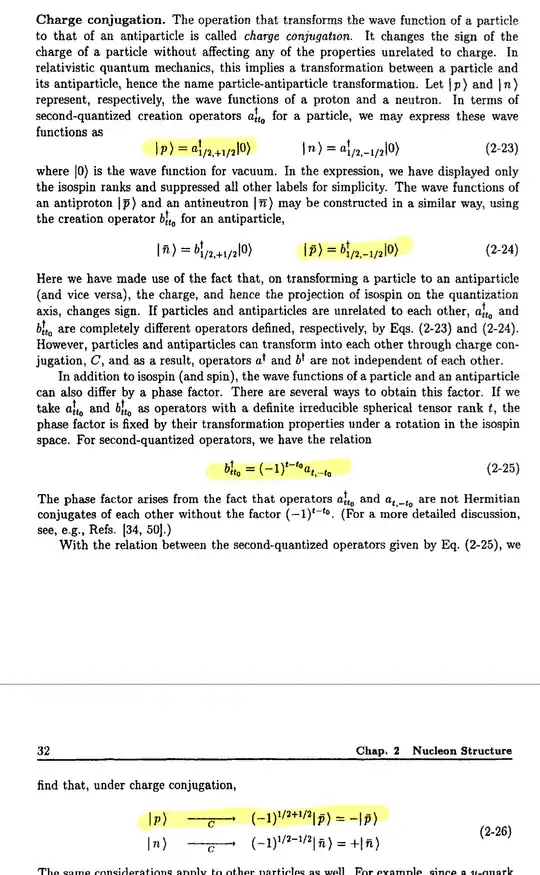I'm following Wong's Introductory Nuclear Physics, 2e. In section 2-4 there's a discussion of charge conjugation I don't fully follow. Something simple is escaping me. The excerpt is produced below, but here's a quick run down:
- The proton state is given as a second-quantization real-particle creation operator acting on the vacuum: $|p\rangle = a^\dagger_{1/2,+1/2} |0\rangle$, where the subscripts refer to the isospin $t=1/2$ of a nucleon and the eigenvalue $t_0=+1/2$ of the third-component of isospin (to distinguish the proton from the neutron $a^\dagger_{1/2,-1/2}|0\rangle$).
- Antiprotons are given as an anti-particle creation operator $|\bar p\rangle=b^\dagger_{1/2,-1/2}$
- It is stated without proof (which is okay) that the two creation operators must be related by $b^\dagger_{t, t_0}=(-1)^{t-t_0}a_{t,-t_0}$
- Then the part I don't understand is how charge conjugation (particle-antiparticle) is given for the proton as $$|p\rangle\xrightarrow[\ C\ ]{}(-1)^{1/2+1/2}|\bar p\rangle$$
It's unclear to me how the creation operators and the operator relations are being used together to produce that charge conjugation mapping. If this other Exchange question addresses it, I don't see how or it is beyond me.
What exactly is the mapping $C$ they are using and how is it related to what was previously given? More specifically, what are the detailed steps between 2-23 through 2-25 and 2-26?
I tried starting with the vacuum, then applying the particle-creation, particle-destruction, and anti-particle creation operators but couldn't get their relation; I wasn't sure of my particle destruction operator. Perhaps they are relying on other physics not given in the discussion.
